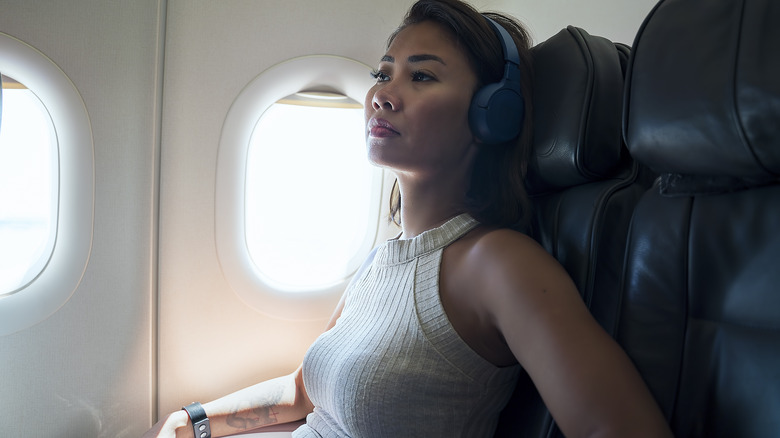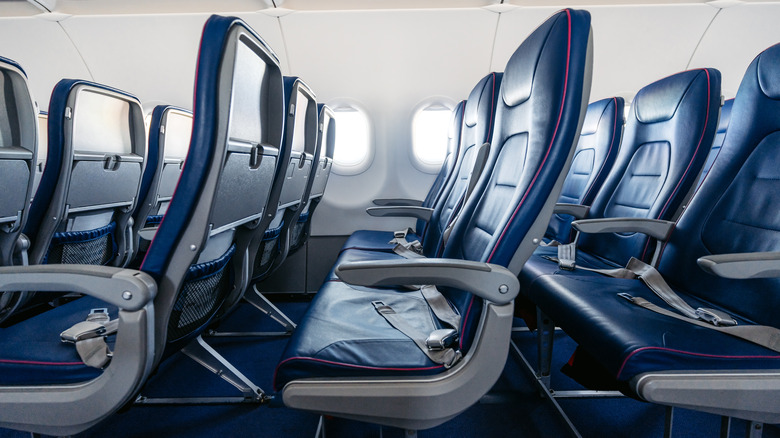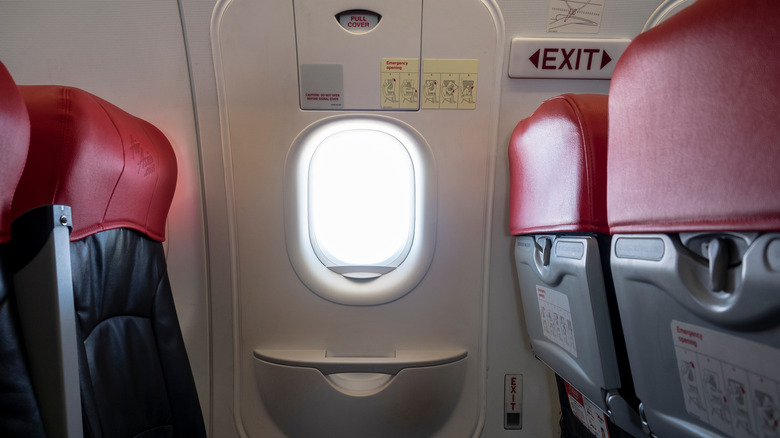The Best Seat On The Plane For Nervous Fliers
Long flights are uncomfortable for most people, but they can be especially difficult for those who struggle with flying anxiety. According to Cleveland Clinic, 25 million Americans experience aerophobia — an intense fear of flying — while others feel only mildly nervous about cruising the skies at 30,000 feet. No matter which category you fall into, some plane seats might help soothe your worries better than others, especially if you hate turbulence.
A former easyJet flight attendant named Matt told The Mirror that some seats shake more than others when the plane hits rough air. "If you're a nervous flyer or feel uneasy with turbulence, then sit as close to the front of the plane as possible," the flight attendant revealed. In other words, if you sit near the back, you'll likely feel more shakes and bumps throughout your journey.
Kyle Koukol, an airplane pilot, shared a similar suggestion with Newsweek: "I always recommend sitting in either the front of the airplane or just over the wing if you are a nervous flyer." Besides offering less turbulence, a spot near the nose will allow you to disembark sooner once you reach your destination.
Aisle or window seat?
Most travelers have a strong preference for either the aisle or window seat on a plane, but you might want to rethink your go-to spot if you're a nervous flier. Even if you get a little squeamish seeing tiny buildings and ant-sized landmarks from above, sitting by the window could ease some of your anxiety. "If the motion [on the plane] causes you any emotional distress, I always recommend sitting at a window seat and keeping your eyes on the horizon, particularly during take-off," Kyle Koukol noted. A steady view of the plane's surroundings may help you get a better sense of any movement you experience.
A 2014 easyJet survey also found that nervous fliers were more likely to opt for window seats than middle or aisle seats. However, there are some merits of sitting away from the window. For one, you might feel less claustrophobic when you have easy access to the aisle. It can also help to be situated near the aisle in case you need assistance (and emotional support) from the cabin crew throughout the flight.
The seats where you're most likely to survive a crash
Let's be honest: A lot of people's fear of flying has to do more with dying in a crash than suffering a little turbulence. If your biggest worry is getting out of an accident alive, where you sit could make a difference. TIME conducted a study of airplane crashes over 35 years to determine which seats are most correlated with fatalities during an accident. According to the data, passengers sitting in the back third of the aircraft were the most likely group to survive, while those in the middle were the most likely to succumb to the accident. However, it's worth noting that, based on the statistics, the majority of passengers (between 61% and 68%) survived their accidents, regardless of where they sat.
Unsurprisingly, you might also be more likely to survive a crash if you're seated near an emergency exit. Exit-row seats typically offer more legroom, which can ease any anxiety you might have regarding small spaces. But more importantly, these seats are located just next to the emergency exits, allowing you to escape quickly if things go awry. However, keep in mind that exit row passengers must be capable of operating the escape latch. If you're not equipped to assist during an emergency, try grabbing a seat just behind the exit row instead. Read more if you want to know the absolute safest airplane seat on a flight.


